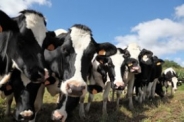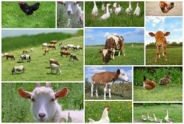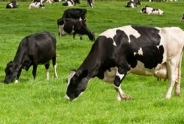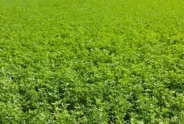Diseases and Their Management in Malting Barley
Bill Verbeten, Field Crops
Northwest New York Dairy, Livestock & Field Crops
June 6, 2013
The first line of defense will be rotational sequences with crops other than barley, wheat, or other cereal crops. This will avoid the buildup of soilborne diseases and of fungal leaf blighting pathogens that survive on the soil surface in infested barley debris. Planting barley after corn should be avoided due to potential exposure to high levels of Fusarium fungus in overwintered corn stalks. Winter barley should be planted after the Hessian fly-free date in September and spring barley as early as possible in April to avoid peak populations of aphids carrying the Barley yellow dwarf virus. Barley seed should be purchased from a reputable seed supplier who can certify high germination and vigor and low levels of seedborne pathogens, especially of smut fungi. Unless the seed is for organic production, seed should be treated with a systemic fungicide for smut control. The most effective management of foliar diseases results from growing varieties with genetic resistance to prevalent diseases such as powdery mildew, Stagonospora blight, leaf rust, scald, and Fusarium head blight. Several of the varieties currently available for malt production are susceptible to one of more of these diseases. Foliar fungicides will play an important role in protection of barley from foliar diseases and Fusarium head blight in the years ahead. I created a table on the following page to provide a resource on which fungicides are currently labeled for control of diseases of importance in New York.
The single most critical disease issue for the future of barley malt in New York is Fusarium head blight because Fusarium-infected grains are contaminated with mycotoxins, particularly deoxynivalenol (DON) or vomitoxin. Malt houses will not purchase barley grain with more than trace levels of DON (well below 1 milligram per kilogram or part per million). Fusarium can resume growth within infested grains during the malting process resulting in DON contamination of malt and beer, and this contamination has also been associated with the undesirable effect of 'gushing' in beer. Fusarium head blight is endemic in our humid New York agricultural environments dominated by corn and other crops that are susceptible to Fusarium graminearum. All barley fields (other than organic) that are intended for malt should be sprayed with one of three effective triazole fungicides (Caramba, Prosaro, or Proline) at Feekes Growth Stage 10.5 when heads first emerge from the boot and are already bearing anthers.
This is article is contributed by: Gary C. Bergstrom, Cornell University
Fungicides Registered for Control of Important Barley Diseases in NY (pdf; 1479KB)
Upcoming Events
2026 Corn Congress
January 14, 2026
Henrietta, NY
Participant Registration for the 2026 Corn Congress NOW OPEN!
NOW OFFERING 1.5 DEC Recertification CREDITS
2026 Forage Congress
January 28, 2026
Nunda, NY
Vendor Registration 12.08.25
2026 Soybean & Small Grains Congress
February 11, 2026
Henrietta, NY
Announcements
The NWNY Team is Hiring!
The NWNY Dairy, Livestock and Field Crops Team is currently looking for an Area Dairy Management Specialist as well as a Small Farms and Livestock Specialist:The full position descriptions and instructions on how to apply are available here:
Area Dairy Management Specialist: https://academicjobsonline.org/ajo/jobs/31178
Small Farms and Livestock Specialist: https://academicjobsonline.org/ajo/jobs/30979
Follow us on Instagram
See photos and reels of our most recent events and programs!Join us on Facebook!
Follow us on Facebook to get up to date posts about events, workshops and everything NWNY!Add us on LinkedIn!
Connect with us on LinkedIn to get more information about upcoming workshops and programs!





